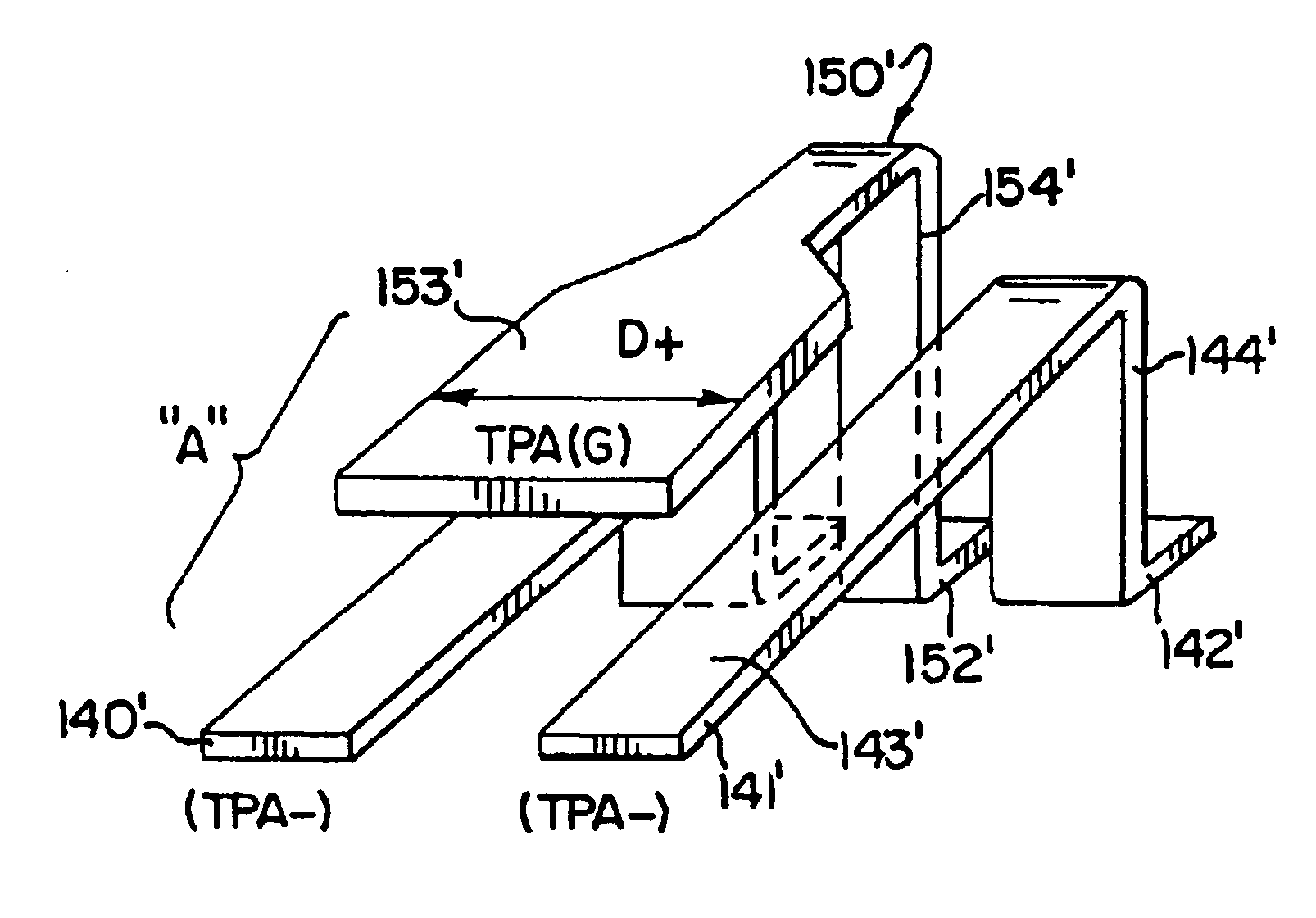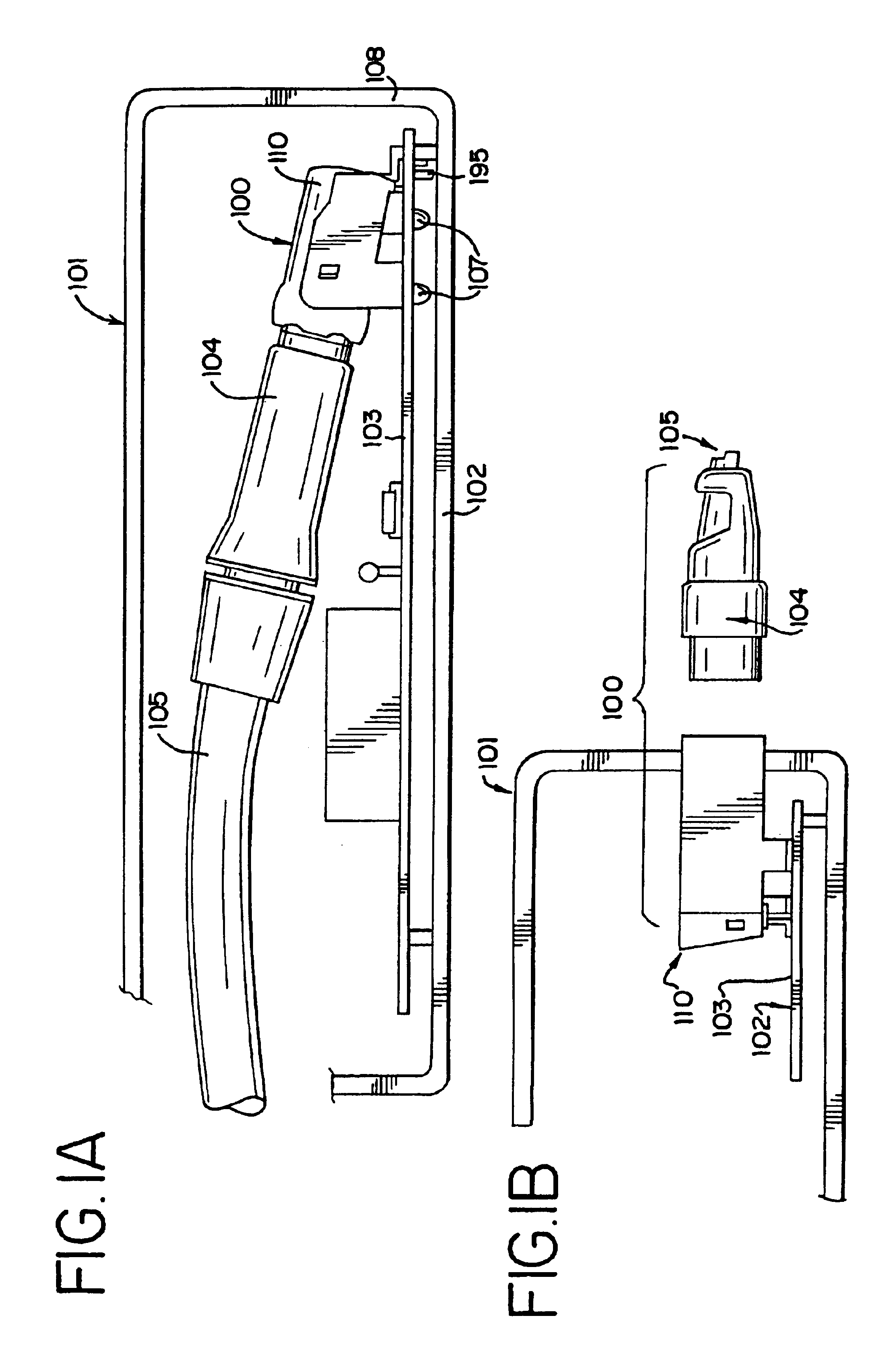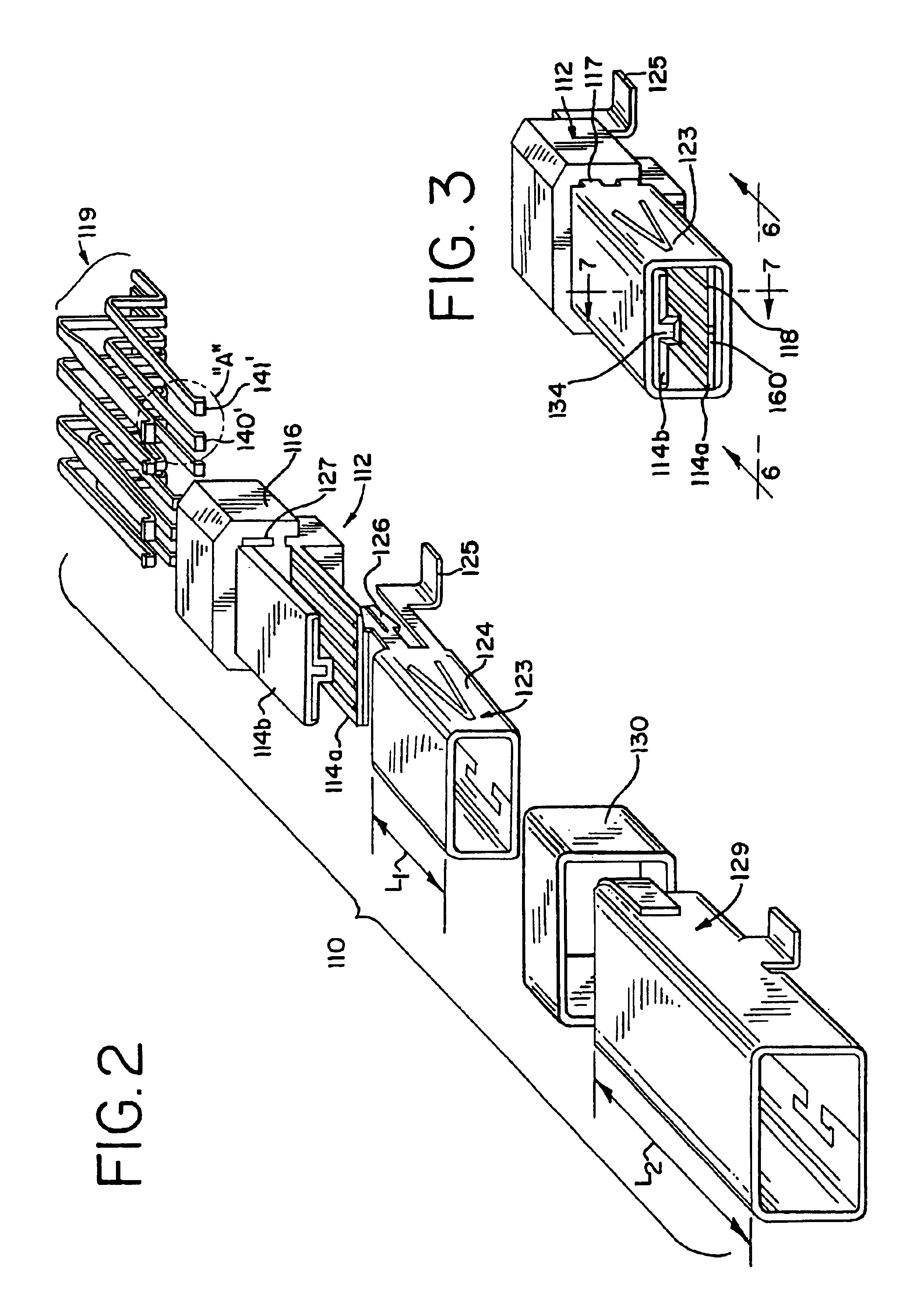Impedance-tuned connector
a technology of impedance tuning and connectors, which is applied in the direction of connection contact materials, casings/cabinets/drawers details, and coupling device connections, etc. it can solve the problems of difficult control of the impedance of the connector at the mating face of the connector, and achieve the effect of maximizing the high speed performance of the connector, facilitating the tuning of the terminals, and reducing the discontinuity of impedan
- Summary
- Abstract
- Description
- Claims
- Application Information
AI Technical Summary
Benefits of technology
Problems solved by technology
Method used
Image
Examples
Embodiment Construction
[0048]The present invention is directed to an improved connector particularly useful in enhancing the performance of high-speed cables, particularly in input-output (“I / O”) applications as well as other type of applications. More specifically, the present invention attempts to impose a measure of mechanical and electrical uniformity on the termination area of the connector to facilitate its performance, both alone and when combined with an opposing connector.
[0049]Many peripheral devices associated with an electronic device, such as a video camera or camcorder, transmit digital signals at various frequencies. Other devices associated with a computer, such as the CPU portion thereof, operate at high speeds for data transmission. High speed cables are used to connect these devices to the CPU and may also be used in some applications to connect two or more CPUs together. A particular cable may be sufficiently constructed to convey high speed signals and may include differential pairs o...
PUM
 Login to View More
Login to View More Abstract
Description
Claims
Application Information
 Login to View More
Login to View More - R&D
- Intellectual Property
- Life Sciences
- Materials
- Tech Scout
- Unparalleled Data Quality
- Higher Quality Content
- 60% Fewer Hallucinations
Browse by: Latest US Patents, China's latest patents, Technical Efficacy Thesaurus, Application Domain, Technology Topic, Popular Technical Reports.
© 2025 PatSnap. All rights reserved.Legal|Privacy policy|Modern Slavery Act Transparency Statement|Sitemap|About US| Contact US: help@patsnap.com



